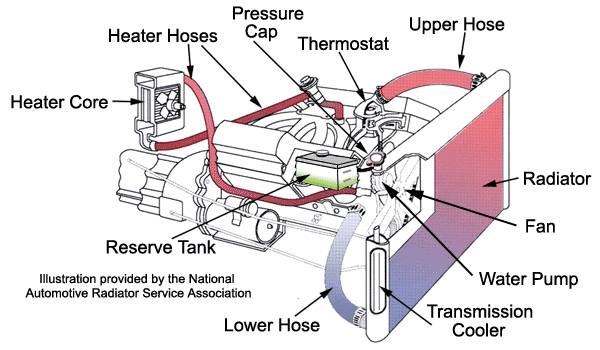
Minerals, heat and time can conspire to create calcium deposits--lime scale and furring--in your automobile radiator and engine block. This buildup can decrease the cooling system efficiency and cause engine overheating. Methods for removing the lime deposits abound on the Internet, but some may be harmful to your radiator or engine block. To be safe and sure, buy a citric- or oxalic acid-based cooling system cleaner and follow the product's instructions.
Begin with a cool engine. Remove the radiator cap and open the petcock or drain plug at the base of your radiator. Drain the radiator completely, close the petcock, and fill the radiator with water. Run the engine with the heater on until the water is circulating through the engine block. Let the engine cool and drain the radiator again.
Make sure your cooling system cleaner or flush is safe to use in your radiator. Most modern radiators are aluminum. If uncertain, contact your car dealer.
Fill the radiator with water and add the cooling system cleaner. Recap the radiator and run the engine with the heater on. Follow the product's directions---some require several hours of operation.
Drain the radiator at least twice, as in Step 1. On the final purge, add only distilled or demineralized water. This will ensure that all the cleaning product as well as the rust, lime scale and other contaminants are drained from the system and that no calcium compounds are in the water you've added.
Determine your cooling system's capacity by checking your owner's manual. Add antifreeze to equal 50 to 70 percent of the total capacity. For example, if your cooling system holds 10 quarts, add 5 to 7 quarts of antifreeze.
Top off the radiator with distilled or demineralized water. Screw on the cap and run the engine until the coolant is circulating through the engine.
Let the engine cool, open the radiator cap and check the coolant level. Top it off with antifreeze and add antifreeze to the overflow reservoir if your car has one.